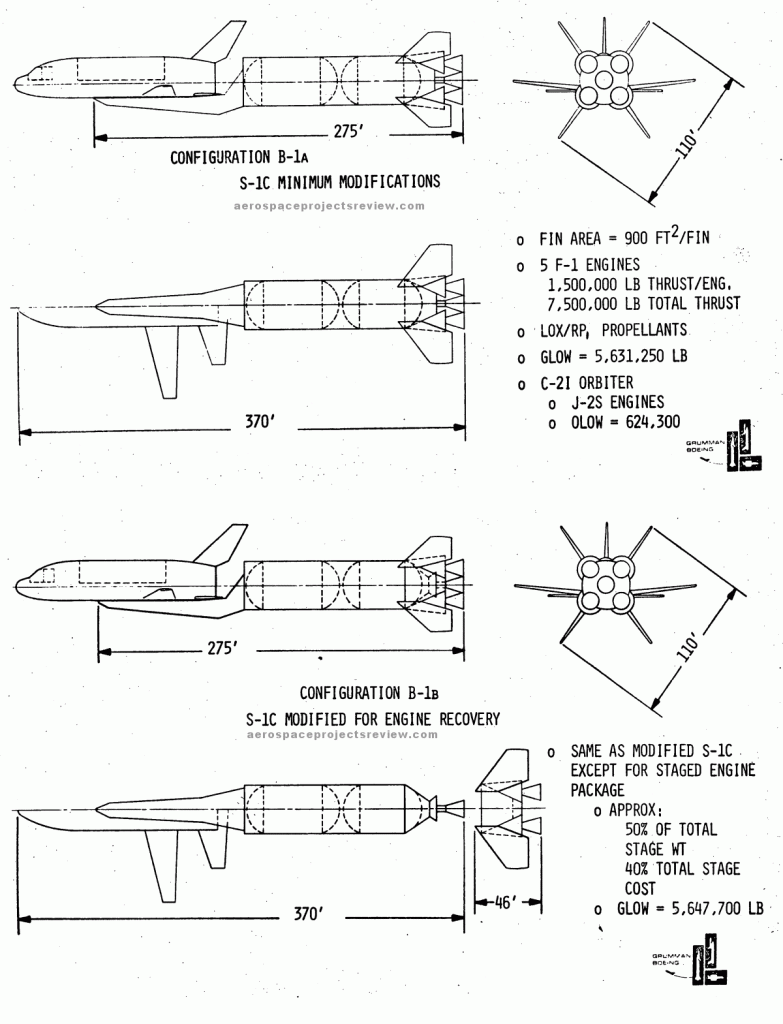Near Term Intermediate Launch Vehicle: Low Cost S-IVB Stages – Case 103-8 (18 March 1969)
By Bellcomm, Inc and C. Bendersky
Saturn IB Costs from 1965 based on an order of 30 vehicles at 6 per year. Final cost does not include transportation or launch costs.
S-IB Stage: $6.28 million ($43.47 million in 2010 Dollars)
S-IVB Stage: $5.98 million ($41.4 million in 2010 Dollars)
Instrument Unit: $3.49 million ($24.16 million in 2010 Dollars)
Government Supervision and GSE: $2.25 million ($15.58 million in 2010 Dollars)
Total Cost Per Saturn IB: $18 million ($124.6 million in 2010 Dollars)
$/lb to Orbit (42,000 lb payload): $429/lb ($2,969/lb in 2010 dollars)
Saturn Derivative Costs (Based on buys of two INTermediate vehicles each year alongside two Saturn V's).
Saturn IB with 120” Solids: $50 million recurring cost ($297 FY10) + $67 million non-recurring costs, 78 klb to 100 n.mi ($3,807/lb in FY10)
156” SRM + S-IVB: $46 million recurring cost ($273.31 FY10) + $162 million non-recurring costs, 108 klb to 100 n.mi ($2,530/lb in FY10)
260” SRM + S-IVB: $41 million recurring cost ($243.6 FY10) + $183 million non-recurring costs, 95 klb to 100 n.mi ($2,564/lb in FY10)
S-IC + S-IVB: $69 million recurring cost ($409.97 FY10) + $31 million non-recurring costs, 132 klb to 100 n.mi ($3,105/lb in FY10)
They were very confident of getting launch costs in the range of $200 to $260 per pound; which translates to about $1,253 to $1,629 per pound in 2010 dollars, if a low cost S-IVB were developed. In fact, there was a cost estimate by the Aerospace Corporation which estimated $260/lb to LEO on the basis of a 15-vehicle buy of the 260” SRM + S-IVB configuration, and a launch rate of five a year.
Changes for the low cost S-IVB would have likely been:
- Low cost insulation, likely similar to the sprayed on external insulation used for the S-II; as the internal tank insulation was very expensive and time consuming to install.
- Flat wire used for all wiring, reducing wiring cost to 16% of prior costs.
- A machined interstage structure, instead of the skin/stringer construction which consumed thousands of rivets and cost more than the hydrogen tank.
- Reducing documentation count from 97 to 44, and checking calibrations against spec, rather than individually calibrating and publishing each one.
- Eliminating hot-firing at Stennis before each launch for unmanned missions.
- Developing a simplified Instrument Unit that would cost only $1 million in 1968~ dollars.

